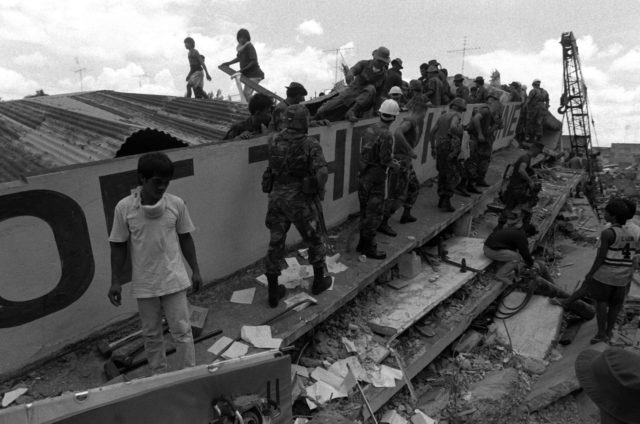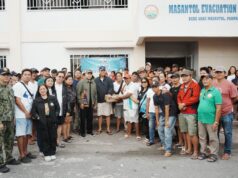Rescuers sift through rubble of the Christian College of the Philippines. File photo grabbed from FB
CABANATUAN CITY – At Bagong Sikat public cemetery, one can see a number of tombs inscribed with different birth dates but with the same day of death – July 16, 1990.
They were among the students of Christian College of the Philippines (CCP) from families of farmers in the village and adjoining places who died in the 7.8–magnitude earthquake that shook this city and other parts of Luzon at around 4:26 p.m. that fateful day.
No other than then Pres. Corazon Aquino herself went to this city to oversee the rescue and retrieval operation as several students and faculty members were trapped in the rubble of the CCP that collapsed like an accordion in the tremor.
The tragedy birthed a hero in 20-year-old high school student Robin Garcia, who braved the aftershocks and falling debris to rescue at least eight classmates and teachers but died while attempting to retrieve more. He was honored by the Boy Scouts of the Philippines and then President Aquino.
But the deaths came not only among CCP students but also some residents who were caught by mudslides in Carranglan town, according to reports.
This incident remains in the people’s mind even as both government and private agencies had since instituted reforms for calamity readiness.
Along with such reforms in making sure that infrastructures were ready for calamities, experts had to do an intervention for rehabilitation of the July 1990 killer quake.
“Critical incidence stress debriefing (CISD) was very essential part of recovery of that quake,” said Dr. Eli Guerrero, PhD, who was then a top official of Araullo University in this city that led the CISD for survivors from CCP.
“May steps and mechanisms dito as part of psychiatric/psychological assistance to people who underwent traumatic experiences or unusual situations like pandemic, loss of a loved one, paranoia and depression caused by various reasons,” Guerrero said.
A number of students who were either trapped in the rubblesof the collapsed building or witnessed the incident were traumatized, he said.
Private people involved in construction said strict adherence to the country’s National Building Code promised security for residents from calamity.
Architect Jun Dawang who designed a school in an area adjacent to the collapsed CCP said their structural engineer maintained seismic design and strict soil testing, as guide to foundation and footing design, among others.
The CCP was never restored and its place has been occupied by the Bureau of Internal Revenue Revenue District Office.
“Three storey pataas kasi ay required na ang soil analysis base sa National Building Code of the Philippines,” Dawang stressed.
An upgrade in design and materials such as use of ready–mix concrete for concrete slab and beans with 3,000 pounds per square inch (psi), depending on required concrete design would also assure the integrity of the structure, he said.
Aside from quakes, the city government has prepared infrastructure to protect the city from floods that had caused loss of life and property in the past, according to sangguniang panlungsod presiding officer Vice Mayor Julius Cesar Vergara.
Vergara said a 17-kilometer dike has been put up by the city government around this city. In 2015, massive floods and debris flow brought by Typhoons “Lando” and “Nona” hit this city, affecting both urban and rural areas.
Vergara urged residents to stop erecting houses along waterways even as the city government, he said, is drawing up settlement projects for informal settlers.
To date, the city has a complete fleet of disaster response vehicles and equipment with a state-of-the-art command center.





